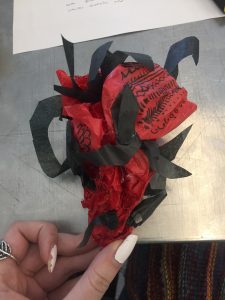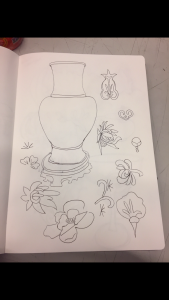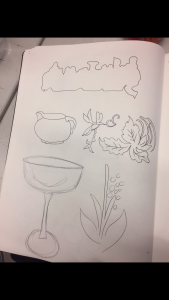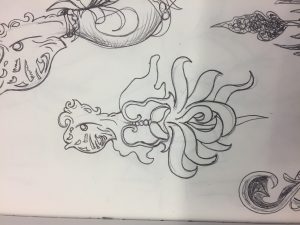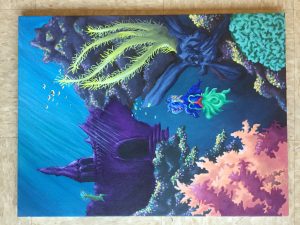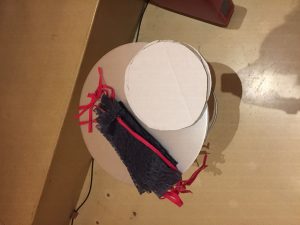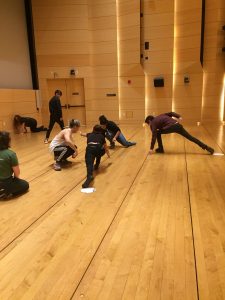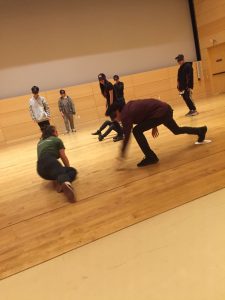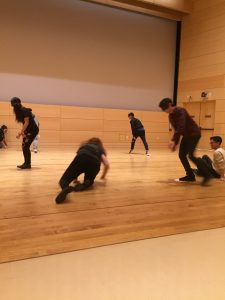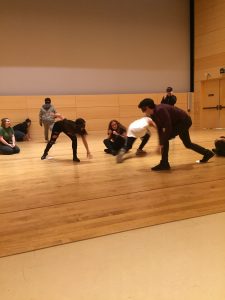I am an undergraduate student finishing up my first year at Parsons, soon to be beginning my major courses on the path of Game Design as a Design and Technology major. Though, as an artist, my arts based classes such as drawing and imaging and time were more catered to assignments that I enjoyed and was immediately excited about as they were more art based, I was surprised by how much I also enjoyed my seminar and studio classes. Seminar and studio have been much more loose when it comes to project subject matter, and for the most part allowed me to choose what kind of projects and research topics I was interested in studying and putting into my work. The ability to shape one’s own curriculum is something that is not only very helpful to those who might not know what they want to do moving forward past their freshman year, but also to those like me who wish to branch out before being confined to a major and minor for the reminder of my undergraduate career.
Projects that allowed me to be very free in how I chose to carry out the assignment that were based around a broad topic or a skill rather than a specific focus have been the most interesting and beneficial for me personally. When projects have a focus that is too specific, most students tend to lean the same way and the final products are much less creative and therefore less interesting to both the viewer and the artist. However when an artist is given a greater amount of freedom there is room for them to both grow as an artist in skill by branching out and to let their creativity and the things that inspire them take control. I was fortunate enough to be in classes that were more lenient with subject matter that allowed me to grow as an artist over the course of my first year here at Parsons. Although I attended an arts university for my senior year of high school as a part of their high school program and already knew my way around many of the techniques and mediums involved in drawing and sculpture, this allowed me to branch out of my comfort zone and try new technology such as the laser lab.
Overall my particular style and the type of art I gravitate toward is evident among the final products of my assignments. I tend to make art that is representational rather than abstract and and drawn to organic forms as opposed to geometric. I did branch out from the art I am most used to, particularly in drawing and imaging in which I did a substantial amount of digital work which is something I had only been exposed to briefly in the past. The skills I learned from drawing and imaging are not only the most useful as I move forward in my game design career, but pushed me in a new direction creatively and allowed for a lot of expansion as far as my portfolio goes. I also branched out in my seminar and studio classes. I explored and utilized new mediums I was beginning to become more familiar with for studio projects and was allowed the freedom of project subject matter to explore conceptual matters such as personal identity rather than be held down by the parameters of a constraining prompt. In my related seminar classes I tended to branch out in topic as well, exploring the things that interested me outside of my artistic field. For example, my final research paper for seminar one was about archery, a sport I have been heavily involved in both competitively and recreationally for the majority of my life. My final research paper for seminar two was focused on a topic I became very interested in through art history lessons, Maori tattoos and the culture that surrounds them. These are both topics I would not have thought I would be able to explore within my studies, that the room for creativity in my academic classes allowed me to experience.
Though I typically enjoy projects with rather long processes and a lot of background put into the design or the overall concept, one project that resonated with me was curated within a week, outside of class, not meant to be a detailed process. As a mini project in my studio class to relate to the research papers we have been writing all semester in the paired seminar class, we were assigned the creation of a sculpture. The only instructions were that the sculpture be small, handheld to be exact, made of found objects, and in some way conceptually relate to the topic of our semester-long research papers. Because my seminar paper was about the importance and meaning behind tattoos and speaks mostly of Maori culture and the importance behind their tattoos both in culture and in personal experience, this was the focus of my handheld sculpture. I used left over tissue paper from a past project, of which I chose red and black. The red represented the passion and importance behind these very personal and significant tattoos, and the black mirrors the color that they are produced in. In black I cut out deigns similar to those used in Maori culture and integrated them into the red, meant to represent the being themselves. I then also integrated the designs in drawing form straight onto the red paper. My work tends to be very representational rather than abstract, and although I look for opportunities to branch out, I often find myself looping back to the same types of artwork. This project intentionally drove me to make a sculpture that was more abstract and conceptual with representational qualities rather than a simple depiction of the concept I was meant to portray. This allowed me to explore another form that my art can take in the future, and the quick process behind the sculpture kept me from overthinking which allowed the piece to speak for itself.
Another project that I particularly enjoyed and through which was able to explore my personal creativity was one I was given in my Time: Frame class. The assignment was to first gather images of objects from different time periods and collage aspects of the objects pictured together into many collaged objects or creatures. We were then to create an environment in which this object or creature may dwell and somehow bring this moment to life, in any medium we saw fit. I chose painting, as I felt it was both something that could effectively embody my creation and allow me to explore a medium I love once more before moving into the world of Design and Technology, which is primarily digital. The process itself was very immersive and creative, which I responded well to. Because we spent so long collaging I was able to go through multiple types and phases of designs for my final creature that was to be the focus of my painting. I then created a storyline, a post-human landscape during a time in which the land on Earth has been completely submersed into the ocean. Opportunities presented in projects such as this one are very important to one’s learning experience, especially in such a creative environment. Through this project not only was i allowed to explore my own creativity and reach into the depths of my capability, but I was also very inspired by the designs of my classmates. Everyone came in with different images from the beginning, and by adding in artistic styles and licenses no two projects were at all alike, making them all the more intriguing and inspiring creatively. Being involved in a project that allows so much freedom to explore personal artistic and conceptual interests and being able to experience the creativity of others is exactly what I had hoped to experience at Parsons, and this particular project embodied that experience very well.
I hope to encounter projects that push my creativity as much as those previously mentioned in the coming years as I advance toward my degree. Being in an environment that is creatively stimulating and allows students to explore as much as possible is very beneficial. I am ready to explore the new techniques involved in Design and Technology, and am glad to have the opportunity to learn a lot about the field and different aspects such as coding that I might not have explored otherwise. I look forward to advancing my career through the program and developing my art in the gaming industry, making art with intention and exploring a wide array of concepts as I move forward.
